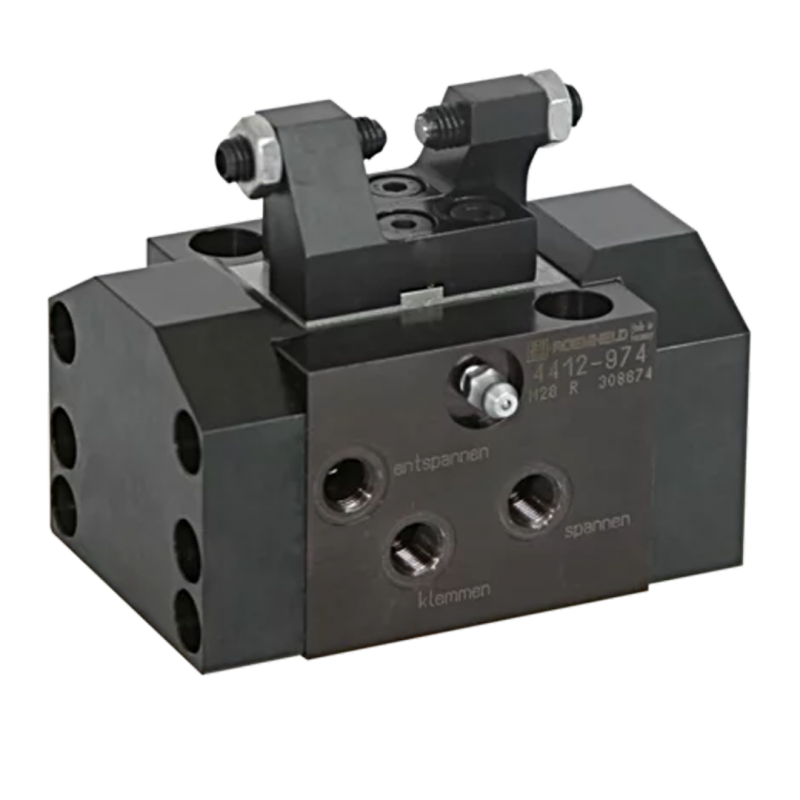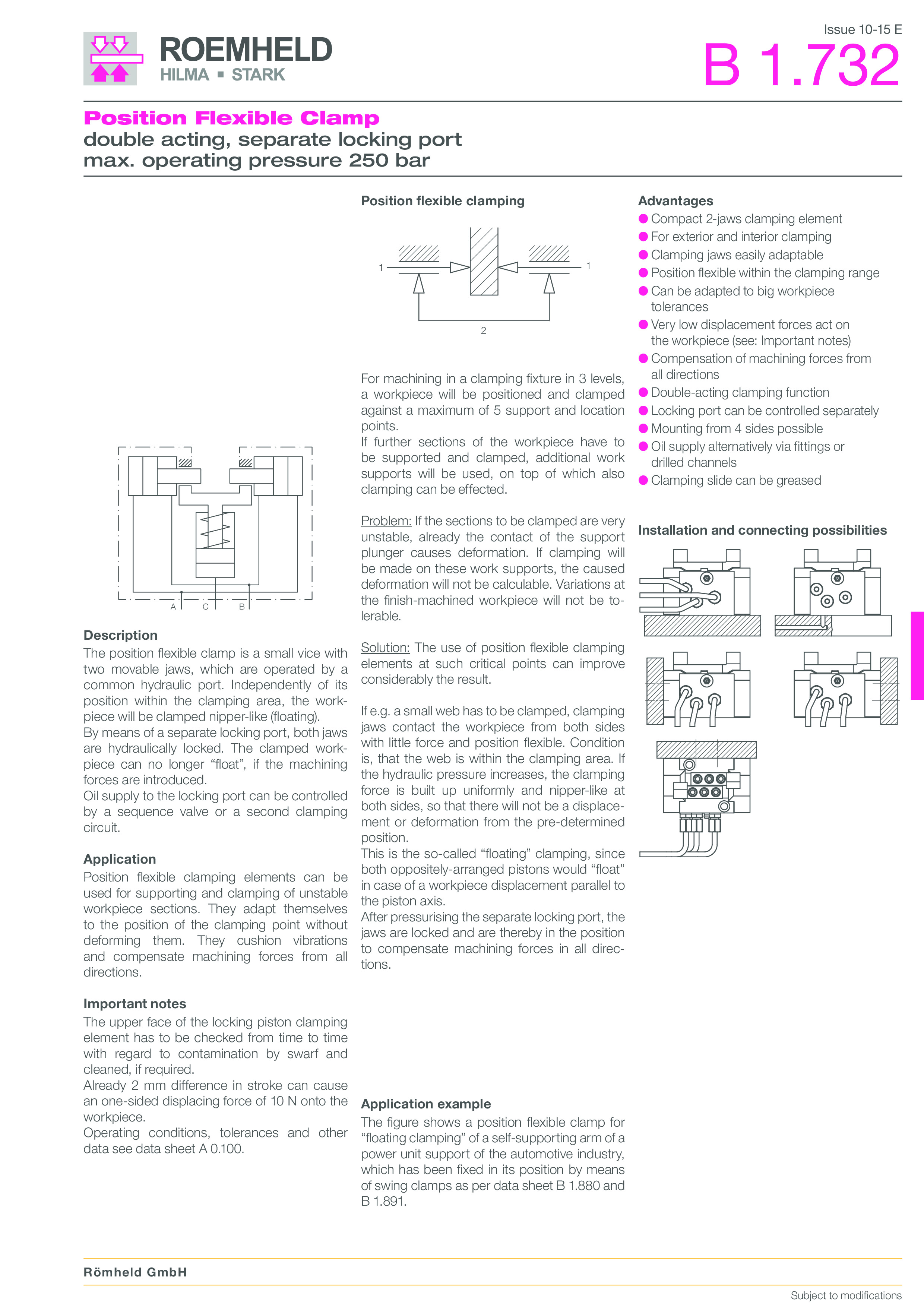

Position Flexible Clamps with Separate Locking Port
ROEMHELD B1.732 Position Flexible Clamp double acting, separate locking port max. operating pressure 250 bar
- Maximum clamping force is 7 kN
- Maximum retention force is 4 kN
- Stroke per clamping jaw is 6 mm
- Operating pressure 250 bar maximum
This Position Flexible Clamp is a small vice with two movable jaws, which are operated by a common hydraulic port. Independently of its position within the clamping area, the workpiece will be clamped nipper-like (floating). By means of a separate locking port, both jaws are hydraulically locked.
Position Flexible Clamps with Separate Locking Port - ROEMHELD B1.732
- Max. clamping force: 7 kN
- Max. retention force: 4 kN
- Stroke per clamping jaw: 6 mm
- max. operating pressure: 250 bar
Advantages:
- Compact 2-jaws clamping element
- For exterior and interior clamping
- Clamping jaws easily adaptable
- Position flexible within the clamping range
- Can be adapted to big workpiece tolerances
- Very low displacement forces act on the workpiece (see: Important notes)
- Compensation of machining forces from all directions
- Double-acting clamping function
- Locking port can be controlled separately
- Mounting from 4 sides possible
- Oil supply alternatively via fittings or drilled channels
- Clamping slide can be greased
Description:
The Position Flexible Clamp is a small vice with two movable jaws, which are operated by a common hydraulic port. Independently of its position within the clamping area, the workpiece will be clamped nipper-like (floating). By means of a separate locking port, both jaws are hydraulically locked. The clamped workpiece can no longer “float”, if the machining forces are introduced. Oil supply to the locking port can be controlled by a sequence valve or a second clamping circuit.
Application:
Position flexible clamping elements can be used for supporting and clamping of unstable workpiece sections. They adapt themselves to the position of the clamping point without deforming them. They cushion vibrations and compensate machining forces from all directions.
| Quantity | Unit discount | You Save |
|---|



